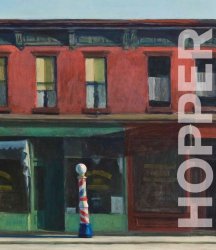$157.50
$157.50
(SAVE Now!)
as of 12/22/2024 (Details)
Edward Hopper is as quintessentially American as Jackson Pollock or Andy Warhol. Like them, his imagery has reached far beyond the realm of art to impact on our culture in the broadest terms, so that we see early twentieth-century America through his work, as much as within it. The painter Charles Burchfield attributed Hopper's success to his "bold individualism," declaring that "in him we have regained that sturdy American independence which Thomas Eakins gave us." Hopper's art was profoundly of its time, both in its expression of the subtle melancholies of modern life and in its deeply cinematic qualities--perhaps Hopper's greatest gift was his treatment of light--to which directors from Alfred Hitchcock to Wim Wenders have paid homage.This volume presents a definitive Hopper monograph. Published for a massive retrospective at the Museo Thyssen-Bornemisza in Madrid, and the Grand Palais in Paris, it approaches Hopper's relatively small oeuvre in two sections. The first covers the artist's formative years from approximately 1900 to 1924, examining a selection of sketches, paintings, drawings, illustrations, prints and watercolors, which are considered alongside works by painters that influenced Hopper, such as Winslow Homer, Robert Henri, John Sloan, Edgar Degas and Walter Sickert. The second section considers the years from 1925 onwards, addressing his mature output through chronological but thematic groupings. Comprehensive in its scope, with a wealth of color reproductions, Hopper is the last word on the artist.
Technical Details
- Used Book in Good Condition
